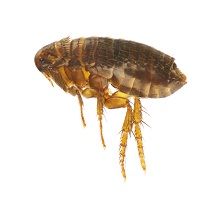Article
Bubonic Plague: Facts and Recommendations for Clinicians
Author(s):
There have been 14 confirmed cases of plague reported in the US in 2015, with 4 deaths.

Reports out of Michigan have confirmed the first case of bubonic plague in the state’s public health history.
According to the Detroit Free Press, state health officials have said the patient is recovering “after apparently contracting the flea-borne illness during a trip to Colorado” and are reassuring the public there is no cause for alarm.
Terry Frankovich, MD, medical director for the Marquette County Health Department, said although this is the same organism that caused the Black Death and killed millions in 14th century Europe, there is no cause for public alarm as this particular case is not contagious.
“Theoretically, the illness can move to bloodstream or to a lung infection, but this… individual had localized infection, so there’s no concern about transmission,” Frankovich said.
There have been 14 cases of plague reported in the US in 2015, with 4 deaths.
Plague is an infectious disease caused by the bacterium Yersinia pestis, which is most often transmitted to humans by the bite of an infected flea (which was exposed to the pathogen via a rat or other carrier rodent). Humans can also become infected after coming in contact with plague-infected animals (such as hunters handling infected game) or through person-to-person infection via aerosolized bacteria (via sneezing, coughing, etc).
There are 3 forms of plague: bubonic, septicemic, and pneumonic. Bubonic plague symptoms, according to the CDC, include “sudden onset of fever, headache, chills, and weakness and one or more swollen, tender and painful lymph nodes.”
Septicemic plague symptoms include “fever, chills, extreme weakness, abdominal pain, shock, and possibly bleeding into the skin and other organs. Skin and other tissues may turn black and die, especially on fingers, toes, and the nose.” This form of plague may develop from untreated bubonic plague.
Pneumonic plague is characterized by “fever, headache, weakness, and a rapidly developing pneumonia with shortness of breath, chest pain, cough, and sometimes bloody or watery mucous.” This form of plague may develop from untreated bubonic or septicemic plague after the bacteria spread to the lungs. Because it may cause respiratory failure, this is the most serious form of plague and is the only one that can be spread from person to person.
According to the CDC, “Plague should be considered in any patient with clinical signs of plague and a recent history of travel to the western United States or any other plague endemic area.”
In suspected cases, the CDC recommends clinicians take specimens (eg, lymph node aspirate, blood and/or sputum culture, etc) from appropriate sites for isolating the bacteria, depending on presentation. The CDC notes that “Y. pestis may be identified microscopically by examination of Gram, Wright, Giemsa, or Wayson’s stained smears of peripheral blood, sputum, or lymph node specimen. Visualization of bipolar-staining, ovoid, Gram-negative organisms with a “safety pin” appearance permits a rapid presumptive diagnosis of plague.”
Intravenous antibiotic therapy is the recommended course of treatment for suspected cases of plague. This document notes that “Gentamicin and fluoroquinolones are typically first-line treatments in the United States. Duration of treatment is 10 to 14 days, or until 2 days after fever subsides. Oral therapy may be substituted once the patient improves.” It also offers guidance on treatment for children and pregnant women.




